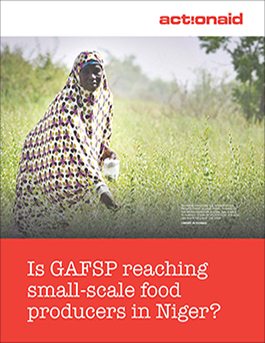Jean-Cyril Dagorn
April 8, 2016
16
In 2013, Niger ranked last in the United Nations Development Program’s Human Development Index with 76 percent of its people living on less than $2 a day – most of them farmers. Thirty-two percent of the population is undernourished, and 40 percent of children under five are chronically malnourished. Poverty is deepest in rural areas, where more than 80 percent of Nigeriens live. The agricultural sector accounts for almost 37 percent of the GDP of Niger and employs three-quarters of the population.
Agriculture mostly relies on small-scale family farms that combine rain-fed crops – mainly cereals and vegetables – with irrigated food and cash crops, when possible, spread in the semi-fertile areas along the country’s southern border with Nigeria, Benin and Burkina Faso. The northern half of the country is covered by the Sahara Desert. A semi-arid zone, used for pastoralism and rain-fed agriculture, separates the two areas. Less than one percent of the country’s agricultural land is irrigated, but irrigated farming accounts for about 30 percent of the country’s agricultural production and 90 percent of its agricultural exports.

